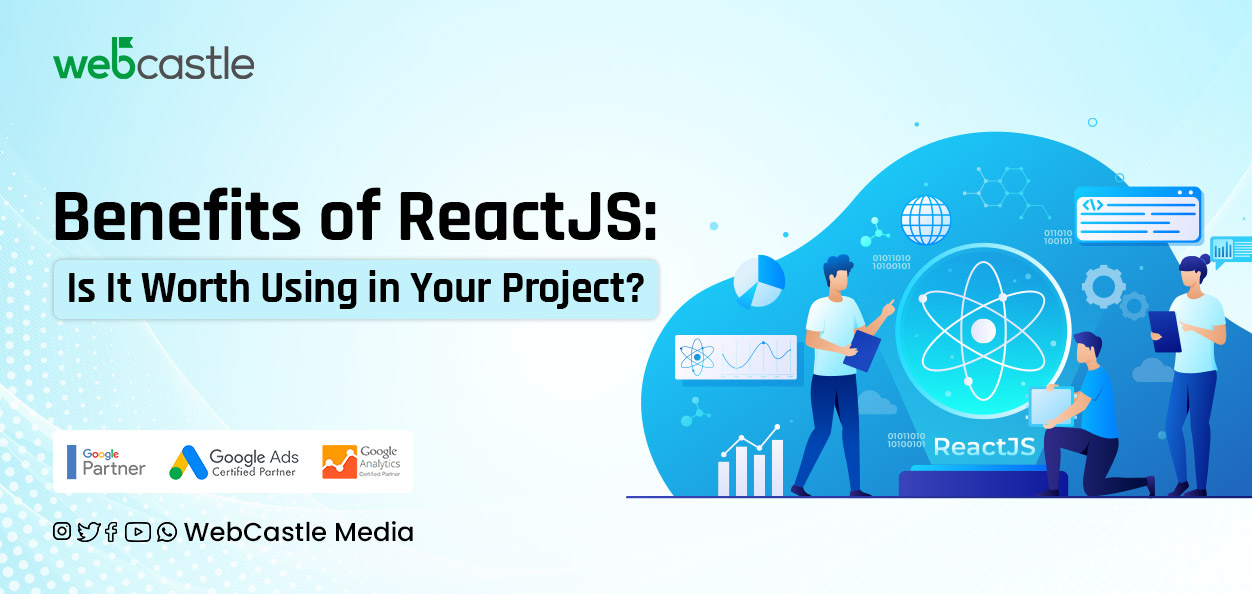
ReactJS has become one of the most popular JavaScript libraries for building user interfaces and web applications. Created by Facebook, React allows developers to build reusable UI components and manage state efficiently. If you’re considering using React for your next web project with the best mobile app development company in India means it’s important to understand the benefits it provides and how it can help you build high-quality applications. In this article, we’ll dive into the key advantages of using ReactJS and look at some examples of when it’s the right choice for your project.
One of the main benefits of React is performance. React uses a virtual DOM where it keeps a copy of the actual DOM in memory and syncs changes efficiently to the real DOM. This means when the state of components changes, React only updates what needs to be changed rather than re-rendering the entire component from scratch. This diffing process makes React very fast and efficient. Pages load faster and feel more responsive. Animation and scrolling also perform better with React. So if you want to build complex UIs that require high performance, React is a great choice.
React encourages the creation of reusable, modular components that can be shared across your application. These presentational components manage their own state, receive data through props, and output a UI. These can then be composed together to build complex UIs. The modular nature of React components makes building and maintaining large applications easier and more efficient. Code reuse saves time and helps keep your code consistent.
React uses declarative programming where you tell it what state you want the UI to be in and React figures out how to optimize updating the UI efficiently. This abstracts away DOM manipulation logic and makes code more predictable and easier to debug. Declarative programming has a steeper learning curve but pays off with cleaner code that has fewer bugs.
React provides an excellent developer experience with features like JSX, a virtual DOM, and React DevTools. JSX allows you to write a markup language directly within JavaScript. The virtual DOM provides a faster re-rendering process. And the React Developer Tools Chrome extension allows for easy inspection and debugging of React components. Overall, React provides a rich ecosystem for developers to build web applications.
For search engines to index your pages, they need to see a fully rendered page. React applications built with client-side rendering can have issues being crawled by search engines. However, React can be rendered on the server side and then hydrated on the client side to solve this. Or a service like Prerender.io can server-side render your React app for SEO. So React can be made just as SEO friendly as a traditional server-side rendered site.
React has a very large open-source community behind it which has created lots of reusable UI components, libraries, and tools. Having an active community means getting help and finding solutions when you run into roadblocks is easy. It also means React is constantly being improved and updated by contributors. The size and passion of the React community make it a safer choice than a framework with little adoption.
Now that we’ve looked at the benefits of using React, when is it the right choice for your web application? Here are some examples of projects well suited for React:
Complex or data-driven single-page applications – React handles complexity by breaking things down into modular components. The virtual DOM makes it great for data that changes over time.
Applications with dynamic, interactive UIs – Since React efficiently updates and renders components, it’s good for highly interactive UIs that need to change quickly.
Applications requiring high performance – React is fast compared to other frameworks, so ideal for apps needing high fps or short load times.
Building reusable component libraries – React’s composable components are perfect for assembling into reusable UI libraries others can consume.
Server-side rendering for SEO – React can be server-side rendered and supports hydration to solve SEO concerns.
Projects that value a rich ecosystem – React’s vast ecosystem provides endless libraries and tools for development.
There are also certain situations where React may not be the best choice:
Basic static sites – For simple static sites that don’t need much interactivity or data binding, React is overkill.
Apps already built with another framework – If your team is already using Vue or Angular effectively, there’s no reason to migrate.
You need browser compatibility back to IE11 – React only officially supports IE11+ but can work with polyfills.
Your team lacks JavaScript/front-end skills – React does have a learning curve, so if your team is more backend-focused, React may slow down development.
You need to build something very quickly – React requires more setup and boilerplate code than simpler libraries like jQuery.
The key is matching the strengths of React with the needs of your particular project. It offers the most benefits for complex, interactive web applications that need to feel responsive and update frequently.
React has clearly become one of the top choices for building modern web user interfaces. The virtual DOM, component architecture, and declarative programming model allow you to build performant, modular UIs with minimal effort. While it has a learning curve, the long-term productivity and maintenance gains are worth the initial investment. React’s vast ecosystem also gives you the ability to add functionality as needed. For most single-page applications, React likely offers the best development experience and performance for your users. However, it’s always smart to carefully consider the needs of your project and team skills before choosing a JavaScript framework. But in many cases, you can’t go wrong in choosing React for your next web project with mobile app development companies in Cochin.

Call
